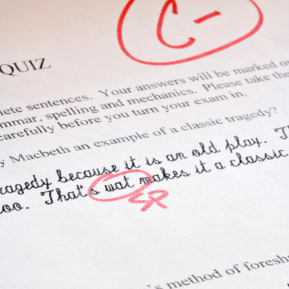Some of the world’s greatest inventors, athletes and artists are dyslexic. In fact, if you look closely, you’ll see our modern world is made by dyslexia.
The telephone (Alexander Graham Bell), first car line production (Henry Ford) and Apple software (Steve Jobs) were created thanks to dyslexia.
There’s no question that there is also a strong link between being dyslexic and being an entrepreneur. According to BDA (British Dyslexia Association) 40% of self-made millionaires have dyslexia. When you realise which self-made millionaires (and billionaires) they are, it might get you searching for your inner dyslexia, that ‘dyslexic edge’.
Some of these well-known characters include Bill Gates, Richard Branson, Stephen Spielberg and Jennifer Aniston. They are all dyslexic and proud. Some were diagnosed early, some not. You might even wonder if you could be a little more like them, a little bit more dyslexic, that you could make just a bit of their fortune?
The positive traits that come with dyslexia
When people hear the word 'dyslexia', it can often have negative connotations. It is likely to be associated with reading difficulty, poor memory and slow learning.
Unfortunately, there’s still a stigma surrounding this learning need. There is so much out there that refers to all the difficulties that one might encounter as a dyslexic learner, and less about the strengths.
There are often dyslexia statistics related to children who dropped out of school or ended up in prison; rather than focusing on facts like 50% of Nasa employees are dyslexic. We know that dyslexia has nothing to do with intelligence. And rumours continue to grow that creativity and dyslexia are closely linked.
While there is no proof that people with dyslexia are naturally more creative, there is research that shows your brain is wired differently which affects how you process information.
Other positives may include a natural curiosity, being highly intuitive and insightful, as well as the ability to utilise the brain to alter and create perceptions. Dyslexia allows you to think laterally, use your imagination and spot patterns and problem solve in ways that others cannot.
It can enable you to have a unique view of the world and to be what so many people crave as they grow into adulthood - more individual.
The different ways of seeing the world make you a valuable asset to any team, so it’s no wonder we are learning that certain companies are now actively employing dyslexic learners. So now you can understand why dyslexia in adulthood may actually be really quite desirable.
The potential challenges for people with dyslexia in the education system
However, as we know, it’s not all plain sailing. There are plenty of young children and adults who have struggled through life with dyslexia who have not been lucky enough to get the right support in time or make their billions (only 20% of dyslexic children are currently spotted at school).
Unfortunately, this means lots of people have to go through an education system that doesn’t allow them to play to their strengths. It’s an education system that’s still heavily based on assessments and exams and often your ability to memorise information.
As a result, it can reward certain types of learners, certain types of intelligences, whilst often failing others or encouraging children to find different paths in life - often paths with fewer barriers to learning.
Even though schools are committed to supporting each individual child, they can only do their best within the system that exists. There are people trying to make change happen. For example, there is a Dyslexia Screening Bill fast approaching, which if successful, will ensure every child is screened for dyslexia at primary school.
However, even with this, and other allowances such as greater use of technology, better teacher training, extra time in exams, and a range of multi-sensory resources, it is not enough. Lots of children still cannot access their learning, and this can have lifelong consequences.
It can cause emotional issues such as frustration, anger issues, anxieties. It can affect children’s social skills and behaviour. It often can impact their self-esteem as they begin to question their academic ability and lose confidence in themselves, especially if their needs aren't identified early on. Ultimately, we know if children are not emotionally secure, they won’t have space for learning and understanding.
Dyslexia and Social Progress
Thank goodness we live in a time when we celebrate differences and we have a much better awareness of learning needs. And where we no longer refer to dyslexia as ‘word blindness.’ Schools and teachers focus a lot more on how children learn, their emotional wellbeing in general and are better equipped to support each learner.
And there’s much more we can do. We can focus on positive language surrounding dyslexia. We can draw their attention to inspirational role models. We can celebrate each child’s differences as a strength because that’s what they are, but most importantly, we need to nurture these strengths.
To do this we need to be on the lookout. We need to look for early signs, although it isn’t always easy to spot - especially for girls. Girls have an extraordinary ability to ‘mask’ difficulties. Schools don’t tend to test children for dyslexia until they are around 6-7 years old, and this is only for children showing obvious signs, so it is vital that parents look out for possible indicators too.
The earlier it is identified, the earlier interventions can begin. Another way we can help is to listen and support. Ongoing support is key for you and your child.
Being dyslexic can be a wonderful thing. It can encourage creativity and uniqueness. It can motivate you to overcompensate in other areas and master the skills that you know are really important for life.
Things like oral communication, people management, problem-solving skills, perseverance, and work ethic. It can drive you forward. So often children and young adults just need a little help getting there.
Let’s continue to share the struggle, the strategies and the success stories. Let’s explain that children may need to work a little harder and hone in on the things they are good at. Let’s help children believe that their dyslexia is not a disadvantage.
Let’s show children with dyslexia that they have the same mental function as Albert Einstein, Walt Disney, John Lennon, and Agatha Christie. Let’s teach children with dyslexia to know that we are lucky to live in a world full of dyslexic learners.
Let’s highlight that it is how these people chose to use their dyslexia. How they have used their dyslexia to give them strength, to give them the motivation to succeed. All because of, and not in spite of their differences. How they used their dyslexia as an advantage, and ultimately how they now view their dyslexia as their (not so secret) superpower.
Please Note:
It’s common that lots of children display ‘typical’ dyslexia behaviours and make mistakes such as reversing b/ds - we all have good and bad days! It’s the severity of the behaviour and the length of time it persists which give vital clues to identifying a learning difficulty such as dyslexia.
If your little one is having a hard time with accessing their learning, and you are unsure how best to help them, then please avoid the “let’s wait and see” approach and don’t hesitate to speak to a professional for further advice and guidance - early intervention is key.
10 useful tips to support all children - not just children with dyslexia
-
Engage in constant communication with your child’s teacher/school - find out how they are supporting your child in school and see if you can use these at home
-
Make special bonding time for you and your child (that could be time eating breakfast, getting dressed, reading together, playing silly games etc)
-
Use simple, clear language and repetition is key - asking them to repeat back instructions of what they’ve heard is a good starting point.
-
Use a predictable routine and ensure your child understands the routine - providing as many reminders as needed
-
Use pictures and actions where possible and visual aids e.g. timetables and checklists
-
Use practical multisensory resources where possible
-
Early intervention is key so push for more support (please know they don’t tend to assess children for Dyslexia through a diagnostic assessment until they are 7 years old which is in Year 2)
-
Encourage your child to focus on their strengths and follow their interests and passions
-
Focus and praise the process and effort levels, over the outcome.
-
Use specific, purposeful praise - avoid quizzing and constant corrections
This website, Made by Dyslexia, is fantastic for further inspiration.
Sign up today for unlimited access:
- Book appointments
- Expert advice & tips
- Premium videos & audio
- Curated parenting newsletters
- Chat with your bloss community
- Discounts & competitions
- Special events





Leave a Rating / Review
You must be logged in to post a comment.